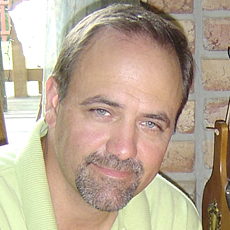
Changes are Here … As all the articles, blogs, industry experts, and of course, CMS have indicated, the very foundation of the healthcare industry is changing – and changing rapidly. In order for your facility to survive and thrive, it’s imperative to stay ahead of this ongoing tsunami. In the long-term care market, a successful strategic plan connects clinical outcomes to financial outcomes and vice versa. Four key areas for consideration:
1. Manage Chronic Disease and Higher Acuity … what’s the connection? Industry data suggests that the average nursing home resident has a complicated disease profile, including one primary disease and up to eight secondary diseases or afflictions. A large percentage of re-hospitalizations from a nursing facility are due to a secondary progression or the onset of a new disease. By providing early detection of a negative change in condition, your facility can prevent further progression of the illness, thereby avoiding the loss of revenue and increased penalties associated with hospital re-admisson issues.
2. Drive Revenue … wait, isn’t cutting costs enough? Facility administrators have become proficient at cutting costs, but there is often insufficient focus on driving revenue. Additionally, cutting operational costs too deeply can negatively impact your facility’s ability to manage higher acuity (and higher reimbursement) patients/residents. Focusing on revenue-driving opportunities is central to your success. The following “back of the napkin” sample calculation should help clarify.
Opportunity Formula – California
• Annual SNF Revenue: $9.7M
• 2013 Strategy: Add 5 Skilled/Medicare beds to your census
• Average Daily Reimbursement Increase: $588/day x 5 beds = $2,940
• Annual Revenue Opportunity Increase: $2,940 x 365 days = $1.1M … a HUGE opportunity!
3. Connect More Effectively with Key Referral Sources … how does this help? Maximizing positive exposure increases your census. Communicate your success at managing chronic diseases and the resulting positive clinical outcomes to key referral sources. Referral sources include hospitals, payors, physicians, home care programs, assisted living facilities and community centers.
Demonstrating your facility’s positive clinical outcomes versus your competition confirms that that you support the referral sources’ goals/objectives of DRG management, improved “real clinical” documentation, disease specific indicators, and reduced hospital re-admissions. Insist that each vendor help your facility to both manage higher acuity and connect more effectively with key referral sources.
4. Embrace Technology … can technology really enhance this strategic plan? Absolutely! Monitoring clinical outcomes is not enough – implementing frontline systems that improve clinical outcomes is essential. One product on the market, Daylight IQ™ by COMS Interactive, is a comprehensive disease management product suite. Through a series of integrated, disease-based clinical protocols that identify changes in condition at the bedside, this point-of-care software platform highlights abnormal findings and empowers your nursing team with appropriate interventions and/or physician communication.
By strengthening the frontline process through a technology component, your facility will achieve superior clinical outcomes and benefit from improved documentation, more effectively meeting regulatory and reimbursement requirements. Technology platforms also facilitate connecting with referral sources through a clinical communications marketing program.
A Strategy for Success … tell me again what all this means? It means that keeping ahead of the countless changes in the healthcare industry is challenging but not impossible. With smart strategic planning following the principles outlined, you can not only survive but thrive. Improve clinical outcomes and enjoy financial outcomes … Catch the wave while your competition wipes out!
Edward J. Tromczynski is the President and Chief Executive Officer of COMS Interactive, LLC.




